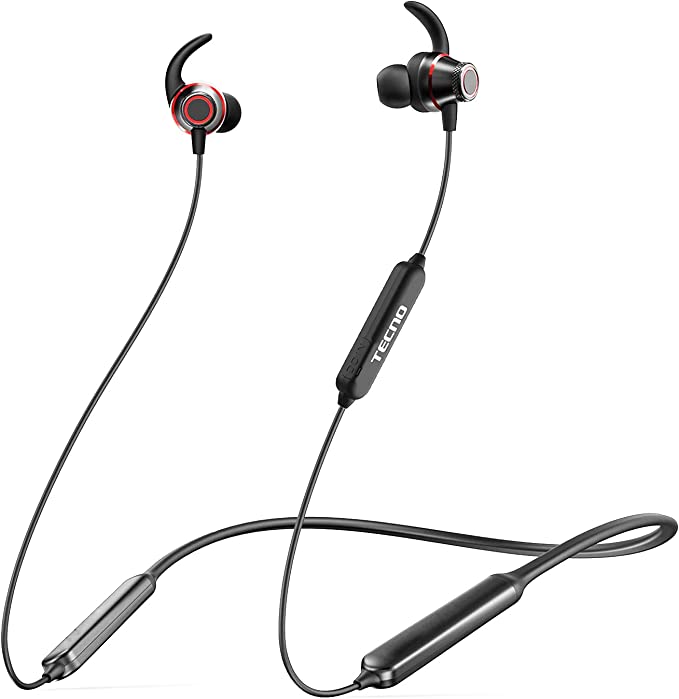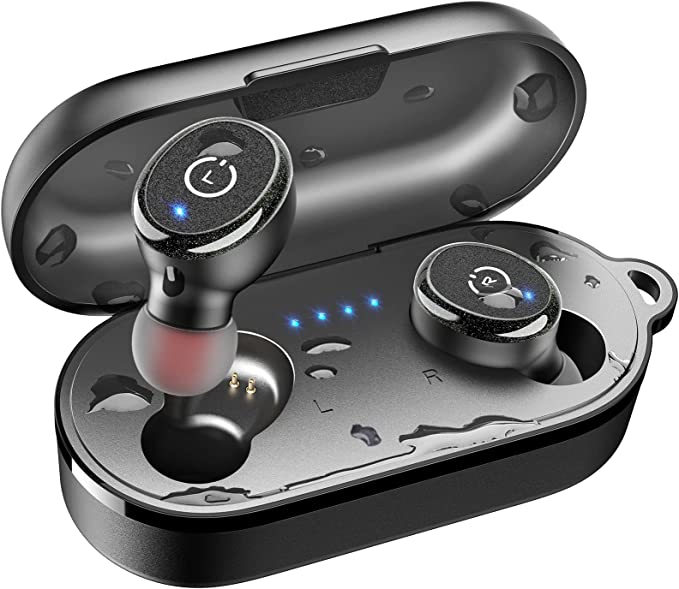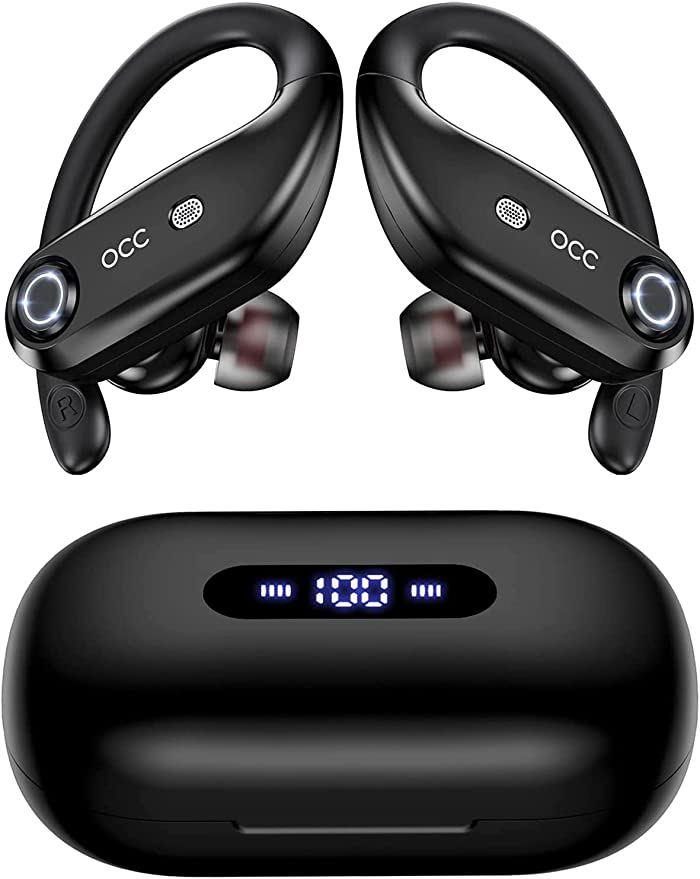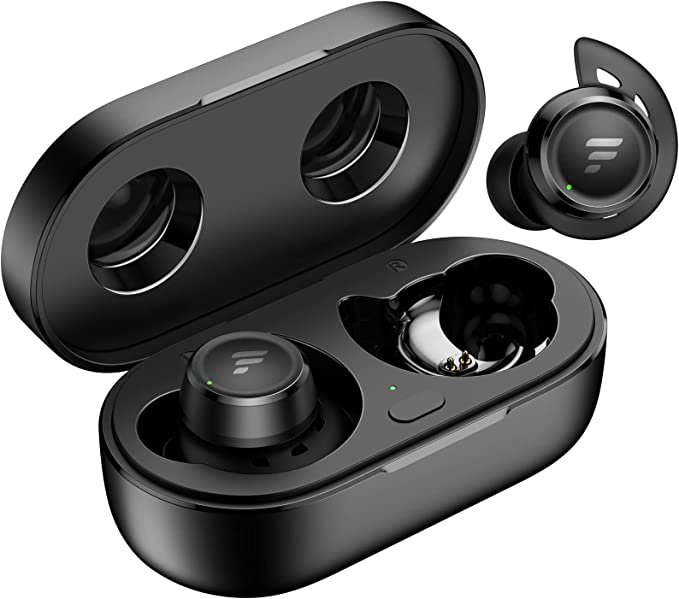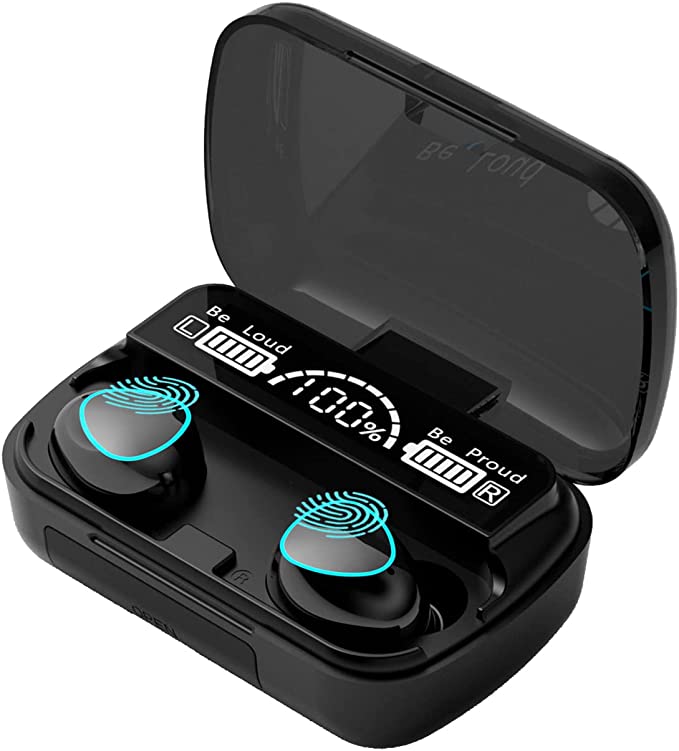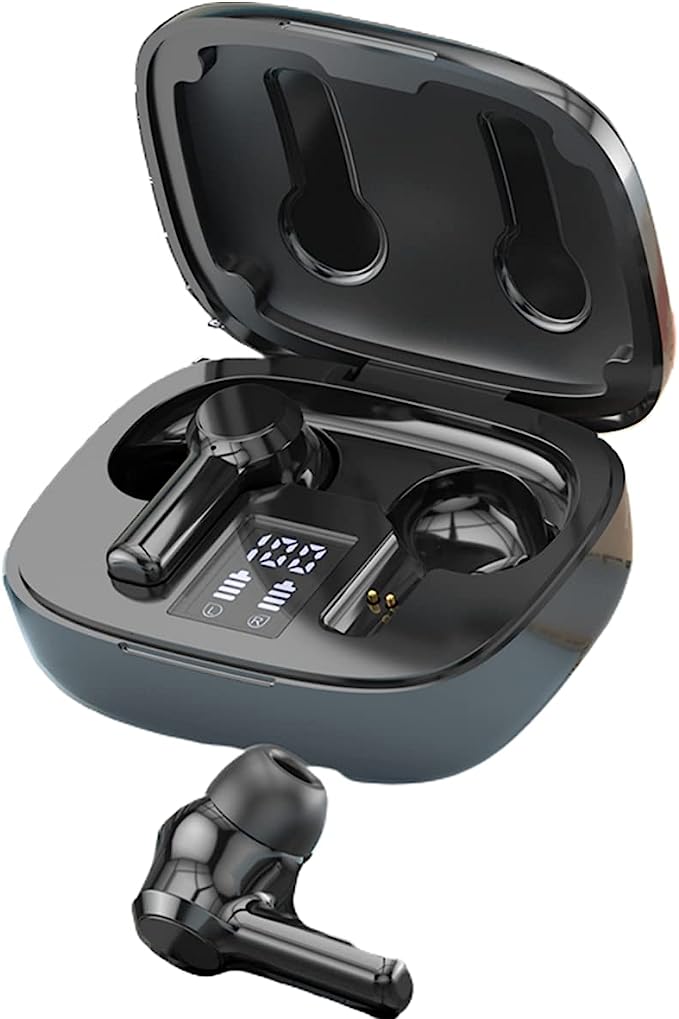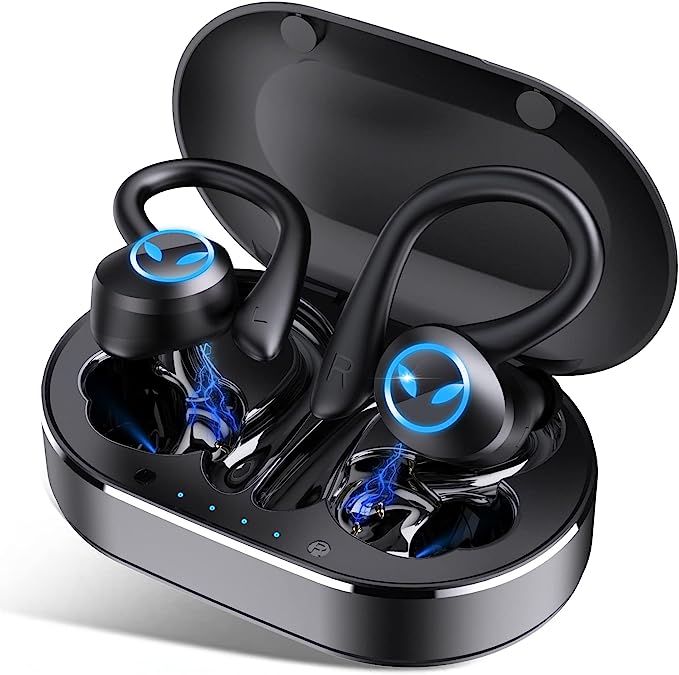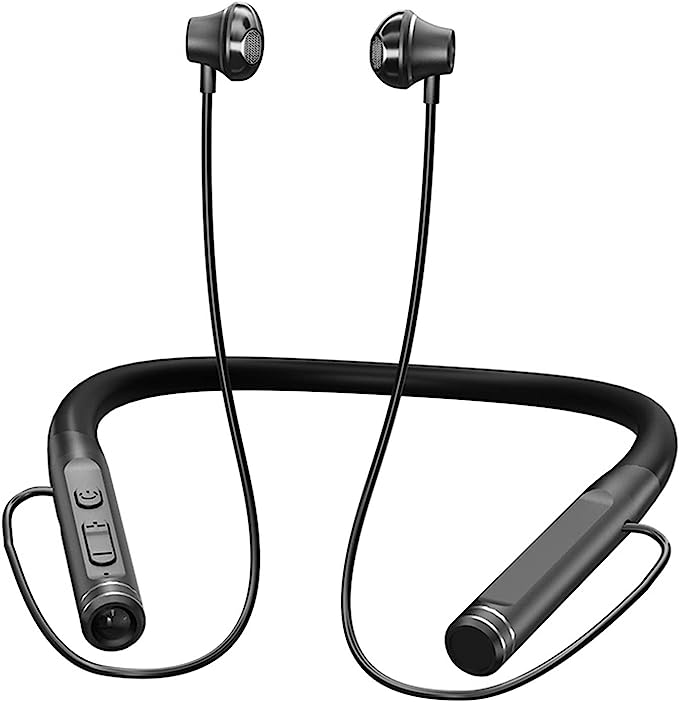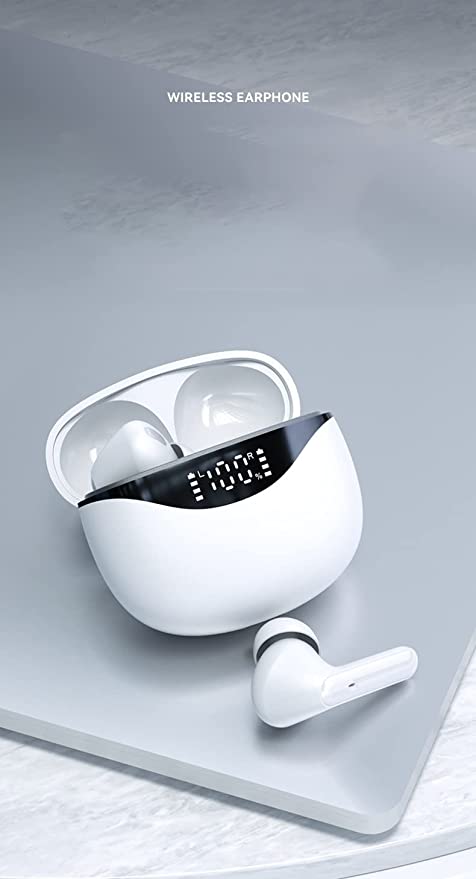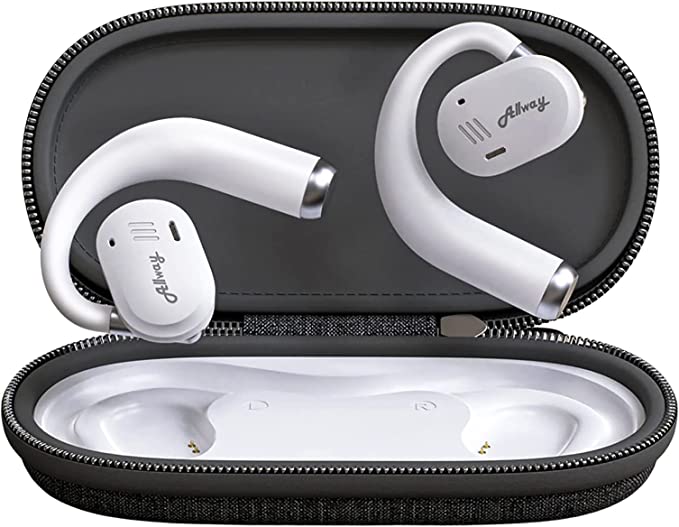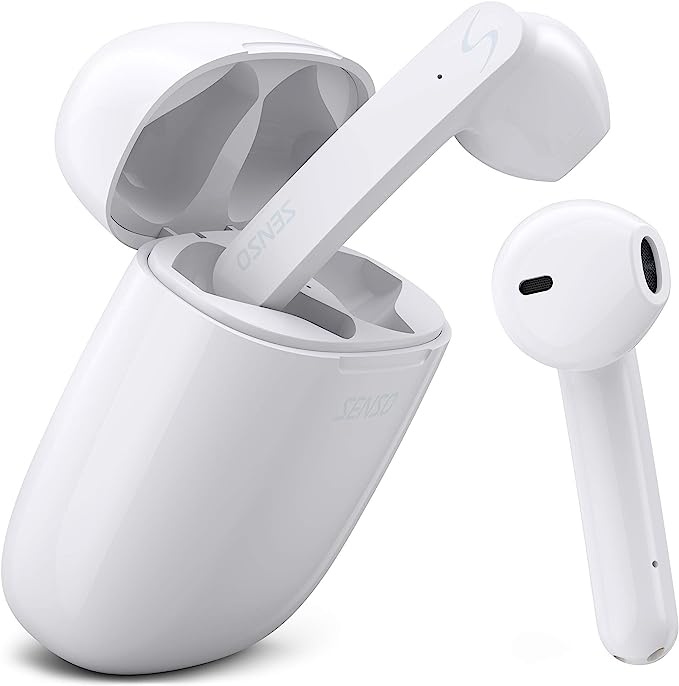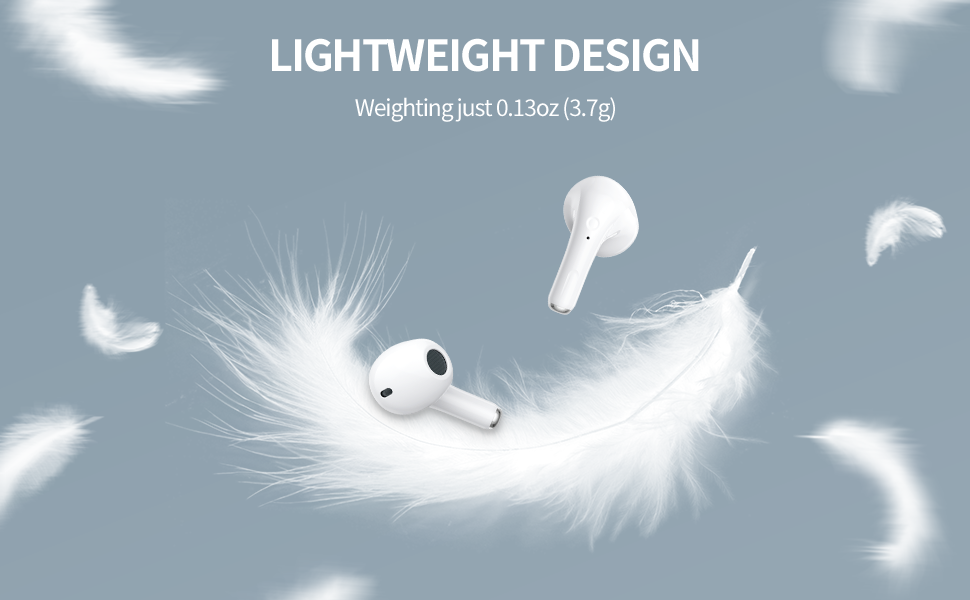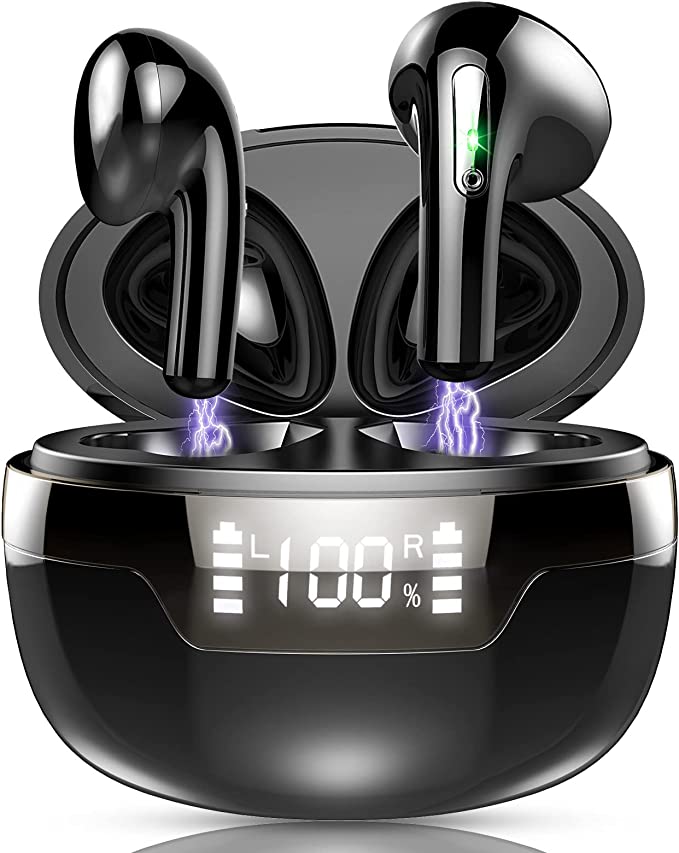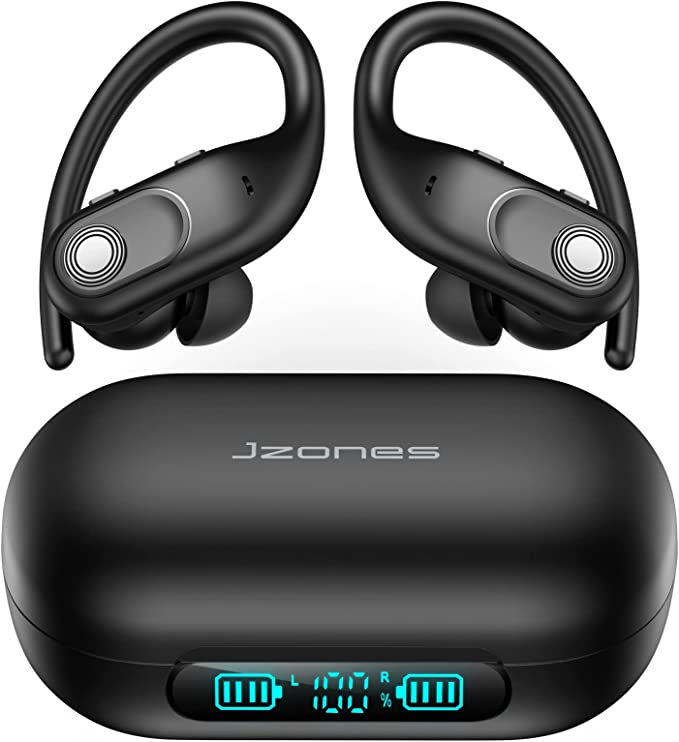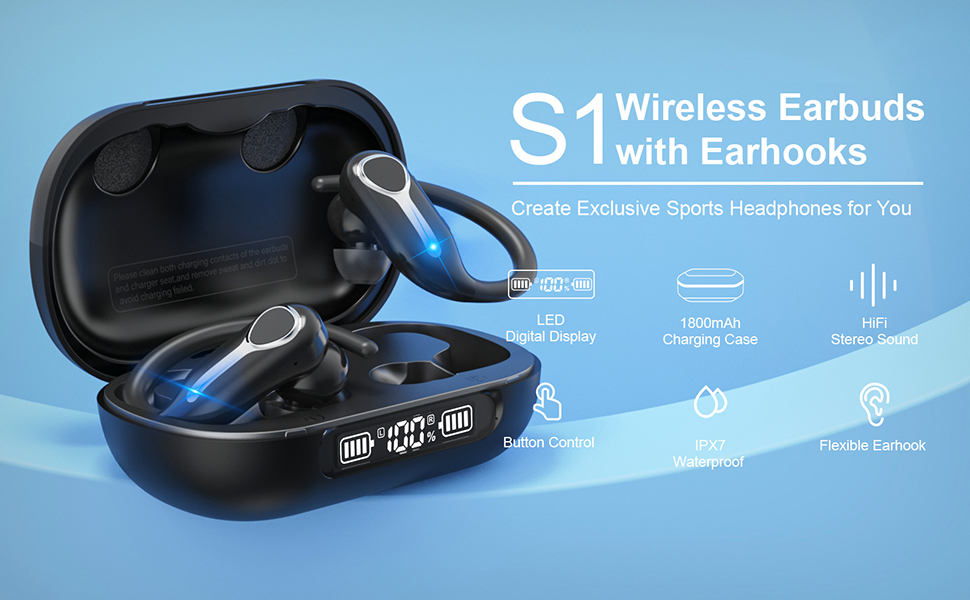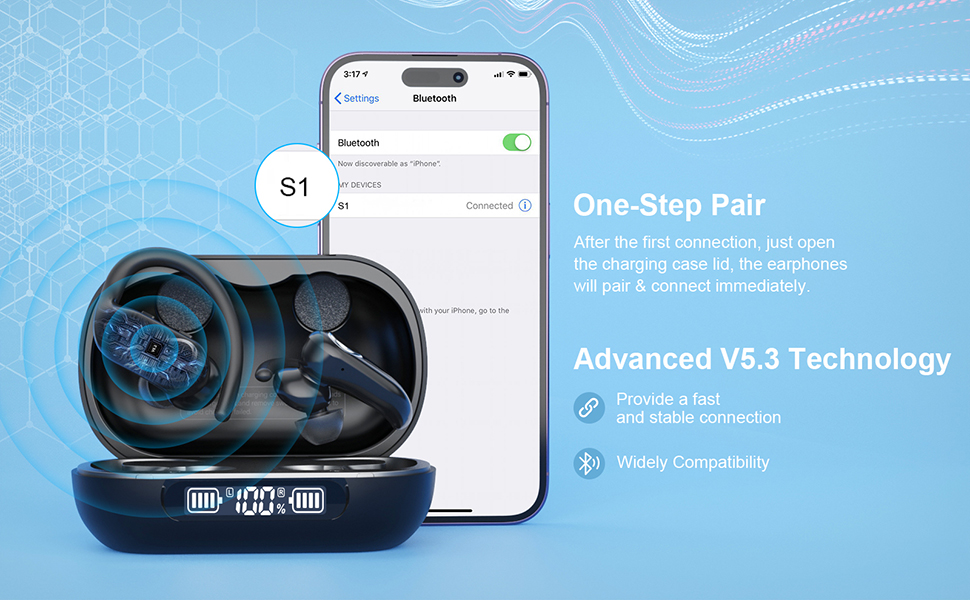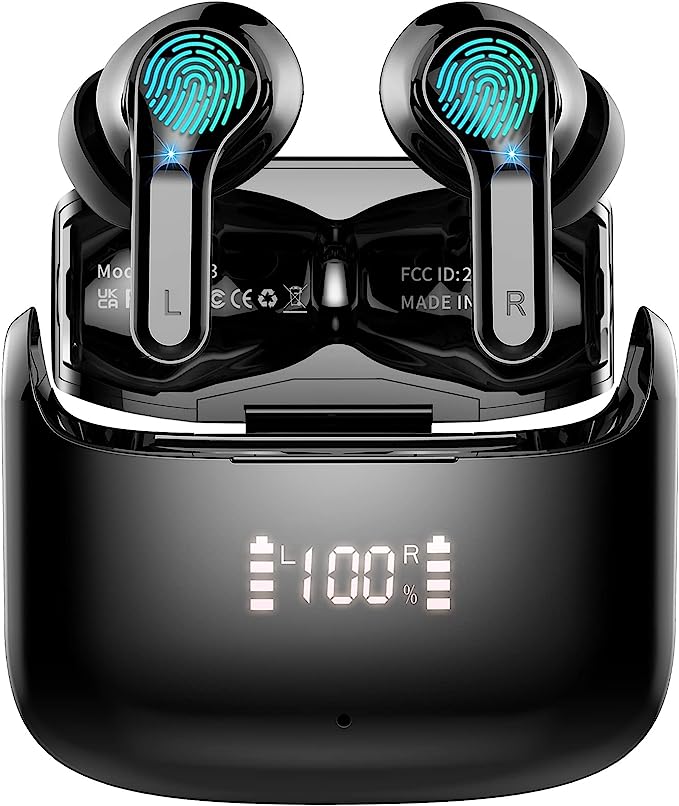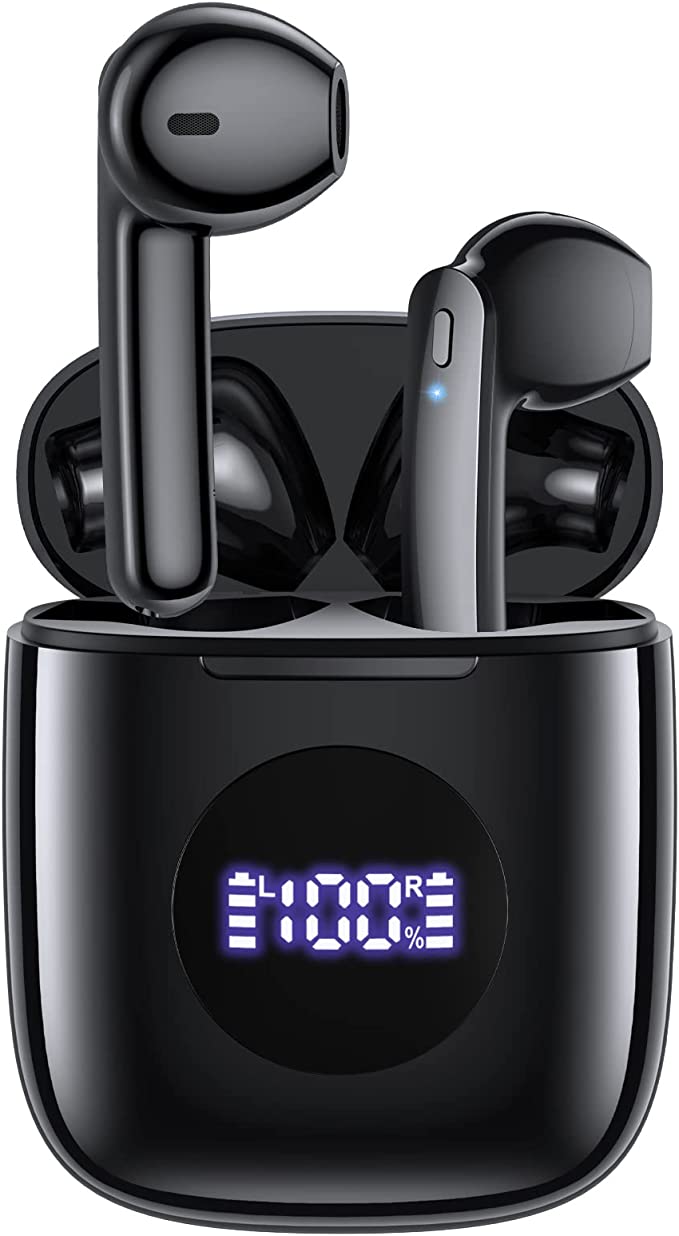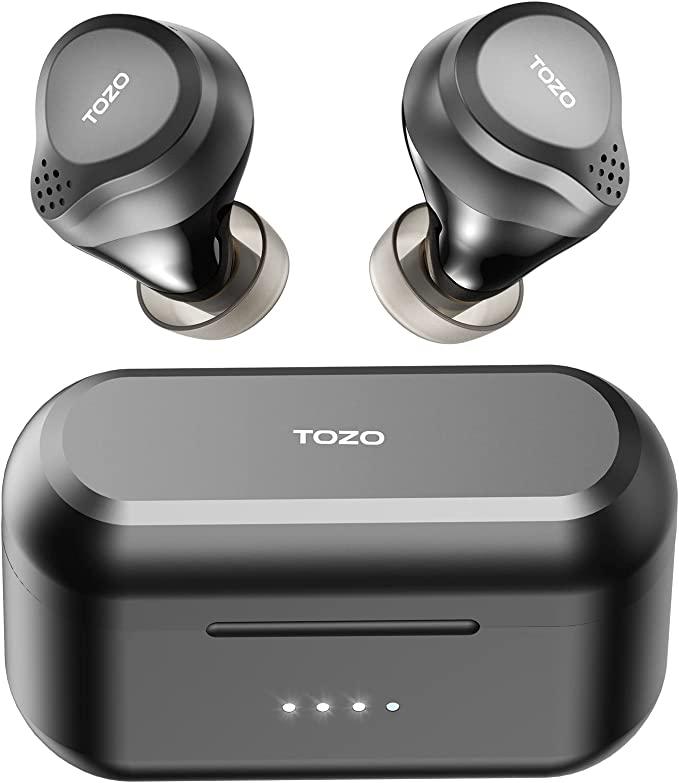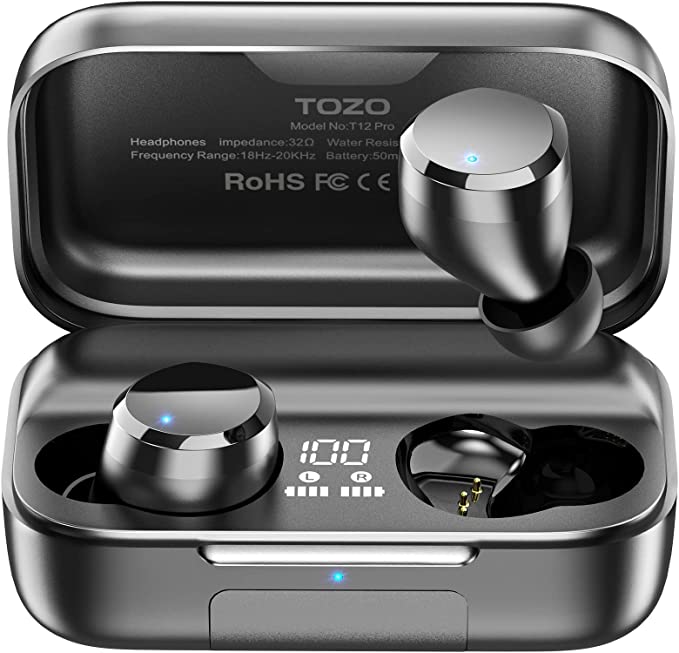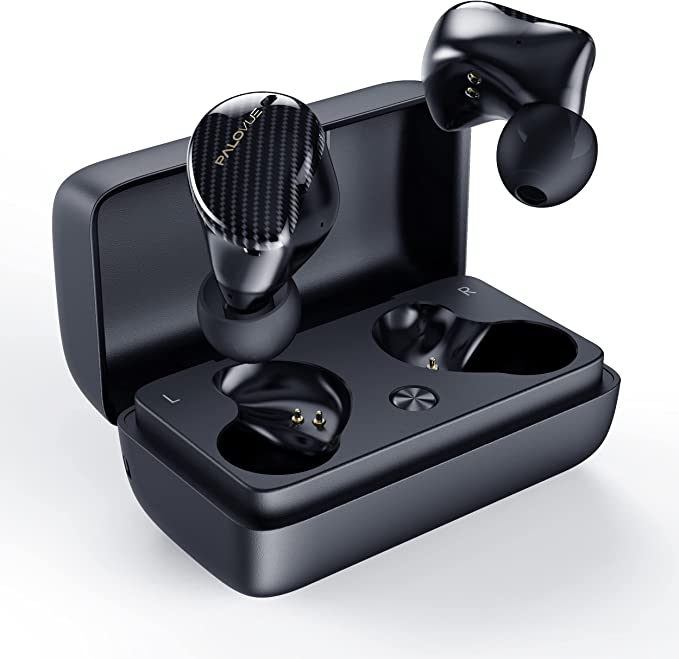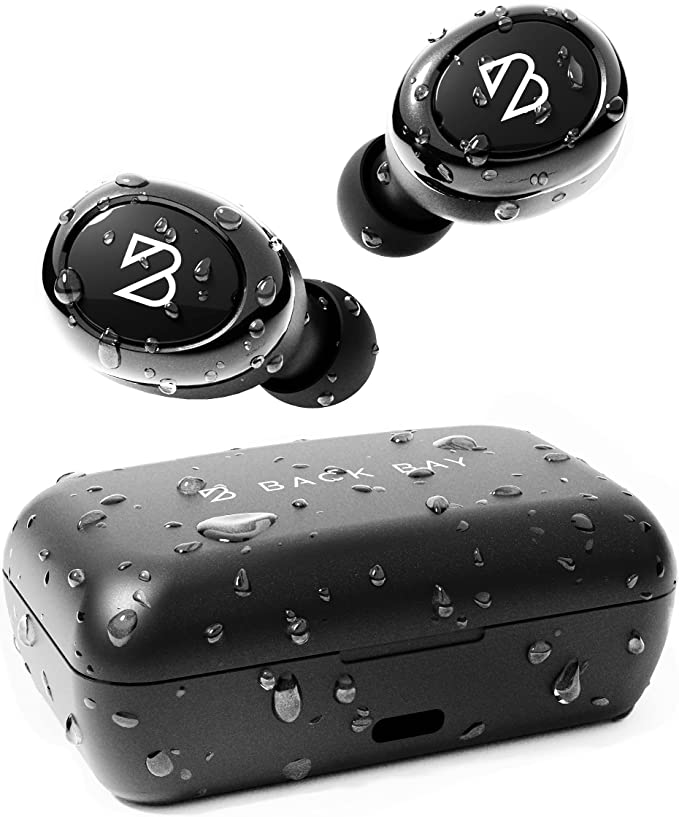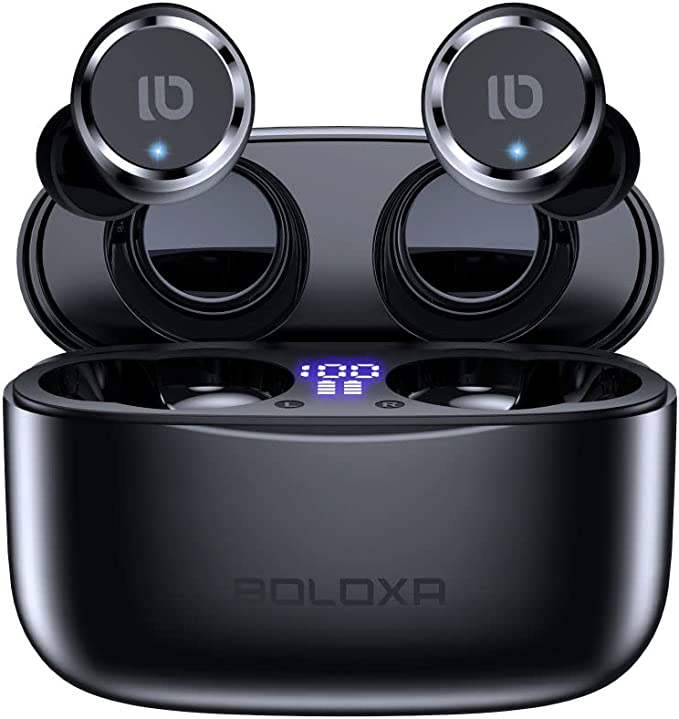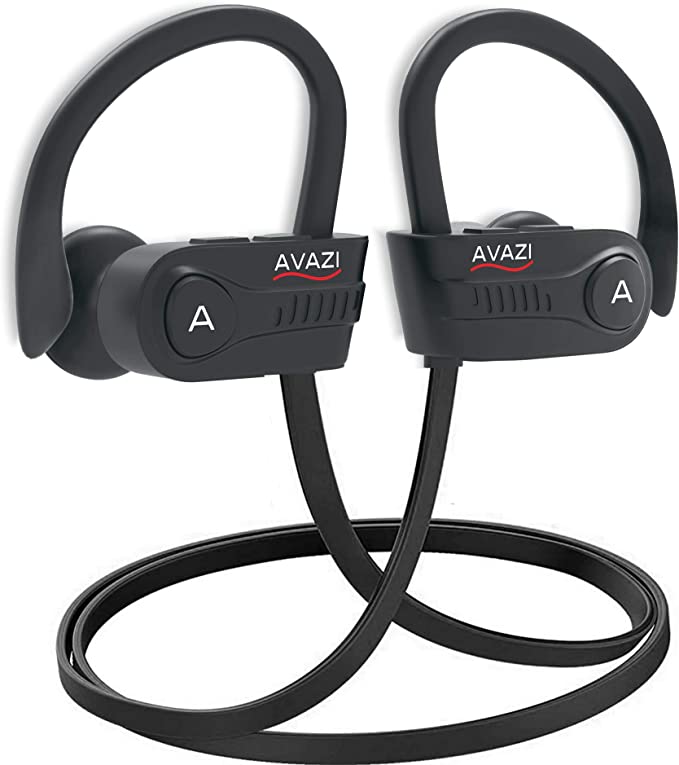TAGRY X18 Wireless Earbuds: Long Battery Life and Superior Sound
Update on March 20, 2025, 6 a.m.
The world has gone wireless. From phones to computers, we’re increasingly untethered, and audio is no exception. But this freedom often comes with trade-offs. We’ve all experienced the frustration of earbuds dying mid-commute, struggling with tangled wires that somehow knot themselves, or dealing with bulky headphones that are anything but portable. The promise of wireless audio is convenience and freedom, but the reality often falls short. The TAGRY X18 wireless earbuds aim to bridge that gap, offering a compelling combination of extended battery life, immersive sound, and a secure, comfortable fit. Let’s explore the science behind these features and see if they live up to the hype.

Power Play: Unpacking the Battery Life of TAGRY X18
One of the most significant limitations of wireless earbuds is their dependence on battery power. No one wants their music to cut out during a workout or their podcast to die on a long flight. This is where the TAGRY X18 makes a strong claim, promising exceptionally long battery life. But how is this achieved? The answer lies in the heart of most portable electronics: the lithium-ion battery.
Lithium-ion batteries have become ubiquitous because they offer a high energy density – meaning they can store a lot of energy in a relatively small space. This is crucial for earbuds, where every millimeter counts. They also have a relatively low self-discharge rate, so they hold their charge well when not in use.

But how do they actually work? It’s all about the movement of lithium ions. Imagine a battery as having two rooms (electrodes) separated by a special door (electrolyte). One room, the anode (negative electrode), is initially filled with lithium ions. When you charge the battery, these ions are forced through the “door” into the other room, the cathode (positive electrode). This stores energy.
When you use the earbuds, the process reverses. The lithium ions want to return to their original “room” (the anode). As they flow back through the electrolyte, they release the stored energy, powering the earbuds’ circuitry. This flow of ions is what provides the electrical current.
The TAGRY X18’s extended playtime likely comes from a combination of factors: a high-capacity lithium-ion battery within the earbuds themselves, efficient power management circuitry, and the charging case. The case acts like a portable power bank, providing multiple additional charges to the earbuds. While the exact battery capacity (measured in milliampere-hours, or mAh) isn’t specified in the provided information, user reports consistently praise the long battery life, with some claiming weeks of use before needing to recharge the case.
Sound Science: How Wireless Earbuds Deliver Audio
Sound, at its core, is vibration. When an object vibrates, it creates pressure waves in the surrounding medium, usually air. These waves travel to our ears, where they vibrate our eardrums, which our brain interprets as sound. The frequency of the vibration determines the pitch (high or low), and the amplitude determines the loudness.
So, how do tiny earbuds recreate these complex vibrations? They use miniature speakers called drivers. The most common type in earbuds is the dynamic driver, which works like a tiny version of a full-sized loudspeaker.
Inside a dynamic driver, you’ll find a diaphragm – a thin, flexible membrane – attached to a coil of wire (the voice coil). This voice coil sits within a magnetic field. When an electrical audio signal passes through the coil, it creates a varying magnetic field that interacts with the permanent magnet. This interaction causes the coil, and therefore the diaphragm, to vibrate. The diaphragm pushes and pulls the air, creating sound waves that correspond to the original audio signal.
The TAGRY X18 claims “Clear Stereo Audio,” but what contributes to good sound quality in earbuds? Several factors are at play:
- Driver Quality: The materials and construction of the diaphragm and voice coil significantly impact the accuracy and detail of the sound.
- Tuning: Engineers carefully “tune” the earbuds by adjusting the driver, the enclosure (the space around the driver), and sometimes using digital signal processing (DSP) to shape the sound signature. This involves boosting or cutting certain frequencies to achieve a desired balance.
- Bluetooth Codecs: Although not the only factor, the method to transfer sound over bluetooth could also make difference.
While the provided information doesn’t specify the exact technologies used to achieve the “Clear Stereo Audio,” user reviews consistently highlight the positive listening experience, praising the fullness and clarity of the sound across various music genres.

Fit for Life: Comfort, Stability, and the TAGRY X18’s “Fans”
Wireless earbuds are meant to be worn, often for extended periods. Comfort and stability are therefore just as important as battery life and sound quality. If earbuds are uncomfortable or constantly fall out, they’re simply not practical.
The TAGRY X18 addresses this with a combination of ergonomic design and a unique feature: the “fans.” Let’s take a look on how it works.
The human ear is a complex structure, with a variety of curves and contours. Earbuds need to fit securely within the outer ear (the concha) and ear canal without causing discomfort. This is where the principles of ergonomics – the science of designing products to fit the human body – come into play.
Many earbuds come with a selection of ear tips, usually made of silicone or foam, in different sizes. This allows users to customize the fit to their individual ear canals. A good seal is crucial not only for comfort but also for sound quality. A proper seal blocks out external noise (passive noise isolation) and prevents sound leakage, resulting in a more immersive listening experience with better bass response.
The TAGRY X18’s “fans” are an additional design element aimed at enhancing stability. These soft, flexible appendages are designed to gently grip the outer ear, providing an extra point of contact and preventing the earbuds from dislodging, even during vigorous movement like running or exercising. User feedback suggests that this design is effective, with many reviewers noting how well the earbuds stay in place. The specific shape and material of the fans would have been carefully chosen to maximize both grip and comfort, avoiding pressure points that could cause irritation over time.
Making a Splash: Understanding IPX7 Waterproofing
Life happens. We get caught in the rain, sweat during workouts, and occasionally spill things. For electronics, especially those worn close to the body, water resistance is a valuable feature. The TAGRY X18 boasts an IPX7 waterproof rating, but what does that actually mean?
IP (Ingress Protection) ratings are a standardized system for classifying the degree of protection provided by enclosures for electrical equipment. The “X” in IPX7 indicates that the device has not been rated for dust protection. The “7” is the crucial part: it signifies that the earbuds can withstand immersion in water up to 1 meter (about 3.3 feet) deep for 30 minutes.
It’s important to note what IPX7 doesn’t cover. It doesn’t guarantee protection against high-pressure water jets (like a shower) or prolonged submersion at greater depths. It also doesn’t mean the earbuds are suitable for swimming, as the chemicals in pool water or salt water could still cause damage over time.
However, an IPX7 rating provides considerable peace of mind for everyday use. It means you don’t have to worry about rain, sweat, or accidental splashes damaging your earbuds. This makes them a practical choice for workouts, outdoor activities, and general use in unpredictable environments.

Beyond the Basics: The User Experience
While individual features like battery life, sound quality, and waterproofing are important, the overall user experience is what truly defines a product. How do all these elements come together in day-to-day use?
The TAGRY X18, based on the available information and user reviews, appears to excel in several key areas. The long battery life, often cited as lasting for many using hours on a single charge, reduces the anxiety of constantly needing to recharge. The charging case, acting as a portable power bank, extends this even further.
The “Clear Stereo Audio,” combined with a good fit that provides passive noise isolation, contributes to an enjoyable listening experience across different genres of music. The secure fit, thanks to the “fans” and multiple ear tip sizes, makes them suitable for active use. And the IPX7 waterproofing adds a layer of durability and peace of mind.
The touch controls, while not detailed extensively in the provided information, are mentioned as being responsive for basic functions like play/pause and volume adjustment.

Final Thoughts
The TAGRY X18 wireless earbuds present a strong case for themselves in a crowded market. They address many of the common pain points associated with wireless earbuds: short battery life, uncomfortable fit, and concerns about water damage. By focusing on these core features and seemingly delivering on their promises, they offer a compelling value proposition.
While a more detailed technical specification sheet (including Bluetooth version, supported codecs, and driver type) would provide a more complete picture, the consistently positive user feedback regarding battery life, sound quality, and fit suggests that the TAGRY X18 is a worthy contender for anyone seeking a reliable and enjoyable wireless audio experience. The lack of detailed information, however, is a notable shortcoming for those who prioritize in-depth technical specifications. Ultimately, the TAGRY X18 seems to prioritize practicality and user experience over highly technical features, which might appeal to a broad audience.
